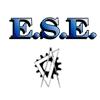Explore all the information on
NIR - Feed analysis
Welcome to the page about NIR - Feed analysis of Engormix; a source of knowledge on NIR - Feed analysis.
Murtala Umar Faruk, Scientist Poultry Nutrition at DSM, speaks about his study on the use of near infrared reflectance spectroscopy (NIRS) to predict the total P, phytate P and crude protein content of common poultry feed ingredients. ...
Comments : 2
Recommendations: 0
1. Introduction REP files ("repp files") make calibrations less sensitive to environmental and sample variations. The abbreviation REP has usually been referred to as repeatability although it would be more correct to let it stand for reproducibility. 2. Experimental To illustrate the effect of using REP files to stabilize NIR...
Comments : 0
Recommendations: 0
.jpg&w=3840&q=75)

Utilization of Food Waste Ingredients for Feed
Suggested link
Daniel J. Undersander, Professor at the University of Wisconsin, USA, gives his point of view on the future of NIR in animal nutrition at the International Symposium on Forage Quality and Conservation sponsored by Lallemand Animal Nutrition, July 22, 2013, Brazil. ...
Comments : 1
Recommendations: 0
Introduction Dairymen use feed and forage testing to reduce feed costs and maximize production. As such, accuracy of the feed tests are of great concern. The true objective of a forage or feed analysis is to predict animal performance from the forage and feed used in a ration formulated to meet nutrient requirements. This means that dairymen must consider, first, does the test relate to animal performance and, second, what the error of analysis...
Comments : 5
Recommendations: 0
Technology has changed the way and speed with which feeds are analyzed. Reports list a wide range of nutrients; some measured some calculated from other measurements. Before deciding what and how often to analyze the following should be considered. 1. Nutrient variation – feeds that have a great deal of variation should be analyzed more often. 2. Individual versus mixed feed – usually we analyze the individual feeds for ration...
Comments : 0
Recommendations: 0
I. INTRODUCTION Numerous works have shown substantial variation in nutritional value of soybean meals (SBM) due to several factors such as genotype, crushing, anti-nutritional factors, implying a need for better and rapid characterization (De Coca-Sinova et al., 2008; Karr-Lilienthal et al., 2004). During the past two decades, Adisseo has been conducting in vivo studies to evaluate digestibility of amino acids (Green et al., 1987) and...
Comments : 1
Recommendations: 0
.jpg&w=3840&q=75)

Utilization of Food Waste Ingredients for Feed
Suggested link
FOSS was present at the World's Poultry Congress 2012 (WPC) held at the Convention Center of the City of Salvador, Bahia, Brazil, where a working demonstration of the ProFoss feed analyser was on show.
The ProFoss ™ uses near infrared (NIR) analytical technology to continuously test feed ingredients passing by on a...
Comments : 3
Recommendations: 0
Adisseo offers a unique NIR service (Precise Nutrition Evaluation) combining Near Infra Red Spectroscopy and " In vivo " digestibility tests which allows the most precise characterization of raw materials for monogastric feed.
For 15 years, the company has been working on correlations between NIR and "In vivo" data. Digestibility tests are permanently conducted on pigs and...
Comments : 1
Recommendations: 0
ABSTRACT The primary objectives of this research were to measure total and phytic phosphorus (P) in a range of ingredients and to establish prediction model using near infrared spectroscopy (NIRS). A total of 227 ingredient samples was collected worldwide during one year and most of the sampled ingredients were cereals, cereal byproducts, oilseeds and oilseed meals. All of the samples were analyzed for their total and phytic...
Comments : 2
Recommendations: 0
ABSTRACT Nutritive values of major ingredients vary considerably not only among different feedstuff but also the same ingredients of different batches. Rapid screening nutritive value has been a great challenge in the feed industry. This study assessed 4 soybean meal (SBM) samples using both NIRS technique and broiler experiments. In broiler Test 1, 4 SBM samples were assigned the same "book value", so that the four dietary...
Comments : 2
Recommendations: 0
.jpg&w=3840&q=75)

Utilization of Food Waste Ingredients for Feed
Suggested link
Perten Instruments introduces SimPlus - a powerful new software for the DA 7200 NIR Analysis Systems.
SimPlus allows users to monitor and administrate multiple DA 7200 instruments (on-site or remote installations) from one location, access data & results, update calibrations, and create reports. · QC management can track production results from multiple facilities immediately · Purchasing...
Comments : 0
Recommendations: 0
Objective:
Evaluate the feasibility of making NIRS calibrations for amino acids and energy for dried distiller's grains and solubles (DDGS).
Materials and methods:
A total of 103 samples of DDGS were obtained from Dr. Jerry Shurson, University of Minnesota. These samples were obtained from 9 different plants over a period of two years and had been analyzed...
Comments : 1
Recommendations: 0
Livestock are most productive when fed a ration balanced according to their nutrient needs. Unfortunately, many rations are balanced using average values for each feedstuff. These so-called "book values" often result in over- or under-feeding certain nutrients. More economical and better balanced diets can be formulated using nutrient concentrations determined from feed analysis. Methods of Feed Testing Once a feed sample has been...
Comments : 0
Recommendations: 0
Bovine respiratory disease continues to be the leading cause of illness and death loss from weaning through finishing. There is no objective method to evaluate a live animal’s severity of sickness or their response to treatment. A pilot study was conducted at a commercial feedyard to evaluate the ability of near infrared spectroscopy to differentiate between cattle identified as healthy and those identified as having undifferentiated Bovine Respiratory Disease (BRD). At processing, 215 randomly...
Comments : 0
Recommendations: 0
.jpg&w=3840&q=75)

Utilization of Food Waste Ingredients for Feed
Suggested link
Barley has a long history of use as both human and animal food and is grown in many countries around the world. In Western countries, barley is primarily used for animal feed and for malting and brewing with very little designated for food use. Over the last two decades there have been a number of important developments that have influenced or have the potential to influence barley utilization in food and feed. Interest in the use of barley as a food grain has increased primarily...
Comments : 0
Recommendations: 0











